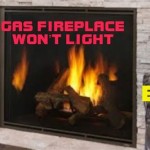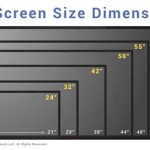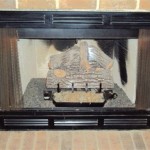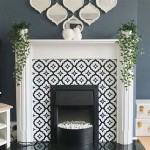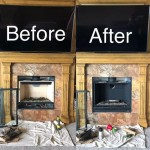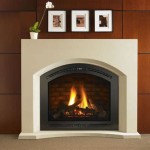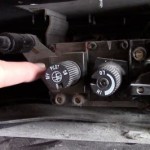Understanding the Essential Parts of a Gas Fireplace
Gas fireplaces offer a cozy and efficient way to warm up your living space. By understanding the essential parts that make up a gas fireplace, you can appreciate its functionality, make informed decisions about maintenance and repairs, and enjoy its comforting warmth for years to come.
Burner Assembly
The burner assembly is the heart of the gas fireplace, where the natural gas or propane mixes with oxygen and ignites to produce a flame. It typically consists of a perforated metal pan with small holes that distribute the gas evenly. The amount of gas flow is regulated by a control valve, allowing you to adjust the flame intensity.
Logs or Ember Bed
Realistic-looking ceramic logs or an ember bed are placed over the burner assembly to create the ambiance of a traditional wood-burning fireplace. These logs or embers are designed to distribute the heat and mimic the appearance of natural flames. They may be made of ceramic or other heat-resistant materials.
Firebox
The firebox encloses the burner assembly and logs or ember bed. It provides insulation and protection, ensuring that the heat is directed into the room rather than into the surrounding walls. The firebox is usually made of metal or a refractory material that can withstand high temperatures.
Glass Front
A glass front allows you to view the flames and enjoy the ambiance of the fireplace without any risk of sparks or embers escaping. The glass is typically tempered for safety and designed to withstand the intense heat produced by the gas burner.
Pilot Light
A pilot light is a small, continuously burning flame that ignites the main gas burner. It is usually powered by a standing pilot or electronic ignition system. When the gas fireplace is turned on, the pilot light ignites the main burner, creating a steady flame.
Remote Control or Wall Switch
Gas fireplaces can be operated remotely using a remote control or wall switch. These devices allow you to turn the fireplace on and off, adjust the flame intensity, and set timers for automatic operation. Some advanced models may also offer features like temperature control and flame modulation.
Safety Features
Gas fireplaces incorporate various safety features to ensure safe and reliable operation. These features may include oxygen depletion sensors, flame sensors, and overheat protection systems. These components monitor the oxygen levels, flame stability, and temperature to prevent any hazardous situations.
Chimney or Vent
Gas fireplaces do not require a traditional chimney. Instead, they use a venting system to exhaust the combustion gases and excess heat. The vent pipe is typically made of metal and runs through the roof or wall, providing a safe and efficient way to remove exhaust gases from the living space.

Gas Fireplace Natural Bdm35 The Cozy Cabin Lennox Hearth Parts

G400 Series G450 G490 Natural Vent Gas Fireplace 114 117 Vermontcastings Parts For Vermont Castings Majestic

Unvented Decorative Gas Fireplace Cfpf Cmp The Cozy Cabin Lennox Hearth Parts

Parts Of A Gas Fireplace Explained With Real Examples

Gbu36 Natural Vent Gas Fireplace 232 234 Vermontcastings Parts For Vermont Castings Majestic

G2000 The Cozy Cabin Stove Fireplace Parts

What Are The Components Of A Fireplace Five Ways Fires

Gst536 See Through Natural Vent Gas Fireplace 274 276 The Cozy Cabin Stove Parts

A Plus Inc Superior B800 Replacement Parts And Accessories

Outdoor Decorative Natural Gas Fireplace Polaris36zen The Cozy Cabin Lennox Hearth Parts
Related Posts

